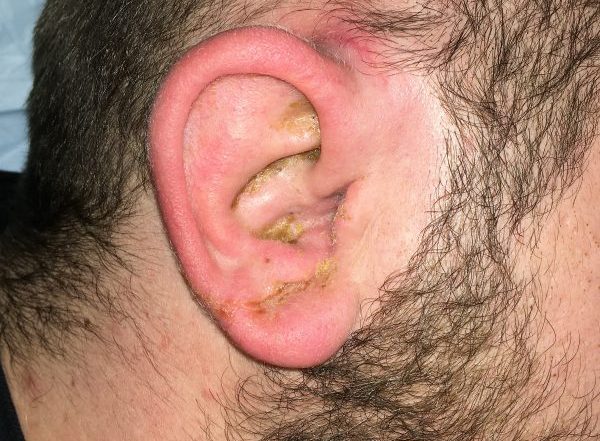Ear infections are very common, around 75 percent of children will have at least one ear infection before they reach 3 years old. Ear infections are the most common reason that children visit doctors.
Ear infections are also known as glue ear, secretory otitis media, middle ear infection, or serous otitis media. Infections in the ear are well understood, and their common occurrence means that research is frequently carried out. This article explains the symptoms and causes of ear infections, the treatment options available, as well as the different types and testing methods.
What is a staph ear infection?
Staph infections of the ear are caused by staphylococcus bacteria, types of germs commonly found on the skin or in the nose of even healthy individuals. Most of the time, these bacteria cause no problems or result in relatively minor skin infections.
But staph infections can turn deadly if the bacteria invade deeper into your body, entering your bloodstream, joints, bones, lungs or heart. A growing number of otherwise healthy people are developing life-threatening staph infections.
What causes staph infection in the ear?
A common cause of a staph infection in your ear occurs when excess water in your ear canal creates an environment for the S. aureus bacteria to grow. While this is usually the result of getting water in your ear while swimming, perspiration or humid weather can also cause the bacteria to grow.
If you tear the skin in your ear while cleaning it with a cotton swab or scratching an itch, the break in the skin could serve as an entry point for the bacteria. Additionally, devices such as hearing aids or earbuds that carry the infection could spread the pathogen into your ear.
Other causes include allergic contact dermatitis — which can be caused by allergies to certain metals, soaps, and shampoos — or skin conditions, such as eczema or psoriasis.
Your doctor will likely diagnose a staph infection in your ear by performing a physical examination of your ear canal or eardrum to look for any lesions, redness, or swollen areas.
Symptoms of a staph infection in the ear include:
- itchy ear
- redness inside or outside your ear
- drainage of clear fluid
- pain that increases over time
- muffled hearing
- a feeling of blockage in your ear caused by swelling and fluid
Symptoms may worsen as the infection progresses.
What’s the treatment for a Staph ear infection?
Antibiotics are used to treat staph ear infections. But there’s been a gradual change in how well these antibiotics work. While most staph ear infections used to be treatable with penicillin, stronger antibiotics are now used. In about 50% of cases, however, resistance is seen to even these strong antibiotics. There are several more potent antibiotics now.
How long does a staph ear infection last?
How long it takes for a staph ear infection to heal depends on the type of infection and whether it’s treated. A staph infection in the ear can take 10 to 20 days to heal without treatment, but treatment may speed up the healing process.
What are the side effects of the treatment for staph ear infection?
Side effects vary depending on the type of antibiotic used to treat the staph ear infection. Side effects from topical ointments can include stinging, itching, and redness in the affected area. Common side effects of oral antibiotics include nausea, vomiting, and diarrhea.
What are the complications associated with staph ear infection?
If left untreated, staph ear infection can be deadly. Rarely, staph infection are resistant to the antibiotics commonly used to treat them. Methicillin-resistant Staphylococcus aureus (MRSA) is a type of staph infection that’s resistant to commonly used antibiotics. According to the American Academy of Family Physicians, this bacteria can cause severe infection and death.
How can I prevent staph ear infection?
To reduce your risk of a staph ear infection, you should practice good hygiene, keep cuts clean, and wash your hands and body often. Avoid sharing towels and personal items with others. More importantly, avoid environments where excess water can get into your ear canal and create a conducive environment for the S. aureus bacteria to grow.






